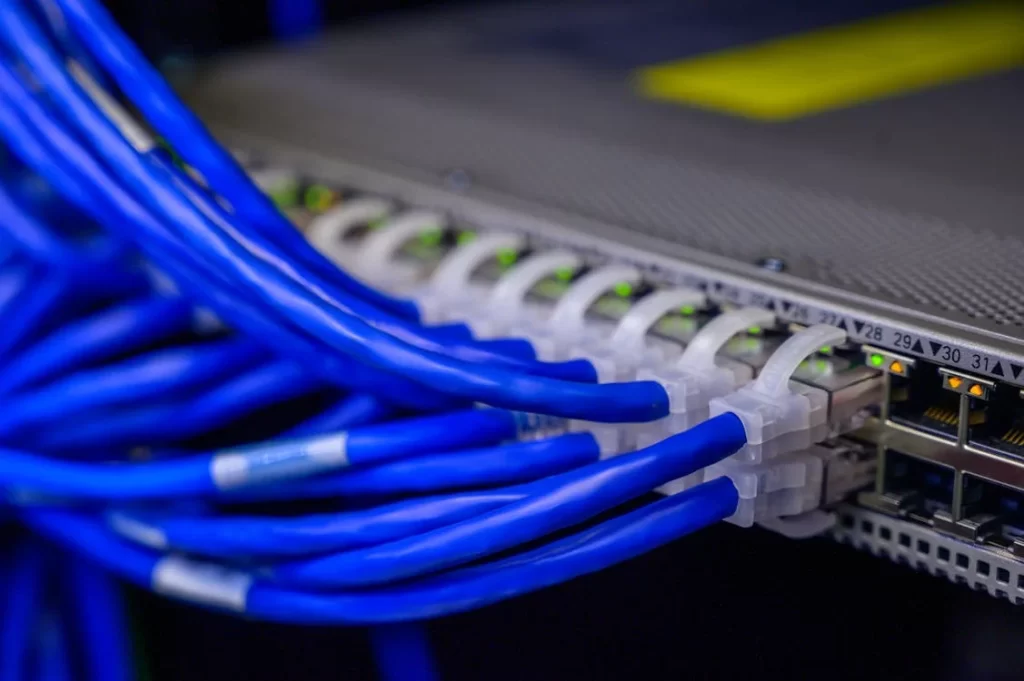
Key Takeaways
- Ethernet switching is a crucial component in managing network traffic efficiently.
- Understanding different types of switches can optimize network performance.
- The integration of Ethernet switches in various sectors enhances connectivity and scalability.
- Security measures associated with Ethernet switching are vital for data protection.
Table of Contents
- Introduction to Ethernet Switching
- Types of Ethernet Switches and Their Applications
- How Ethernet Switching Enhances Network Performance
- Real-World Applications of Ethernet Switching
- Security Implications and Best Practices
- Future Trends in Ethernet Switching Technology
- Conclusion: The Importance of Understanding Ethernet Switching
In the fast-paced world of digital communication, an Ethernet switch operates as the hidden yet vital cog in the vast machinery of network functionality. They are pivotal components connecting devices and orchestrating data traffic with remarkable efficiency. These unsung networking heroes ensure that myriad forms of data transfer occur seamlessly, reducing latency and enhancing overall network performance. Grasping the intricacies of Ethernet switching is crucial for IT and network management professionals, as it lays down the framework for an optimized and reliable digital ecosystem.
At its core, Ethernet switching is all about organizing and managing the overwhelming flow of data in networks to prevent congestion and data loss. As the internet permeates nearly every facet of our lives, the efficient functioning of networks can primarily rely on the skill of these switches. They intelligently direct traffic to ensure data packets reach their intended destinations promptly, making them indispensable for today’s increasingly connected infrastructure.
Introduction to Ethernet Switching
Ethernet switching has revolutionized how data is handled across networks globally. Initially, networks depended on more straightforward methods of data relay, which often resulted in inefficiencies. However, with the advent of Ethernet switches, networks gained the ability to process high volumes of data more effectively. This switch-driven architecture enables multiple devices to communicate at high speeds without the risk of collision or overloading the network. The sheer volume of data transferred across networks today underscores the importance of this technology. Ultimately, Ethernet switching exemplifies the transition from basic networking to sophisticated, high-performance systems.
Types of Ethernet Switches and Their Applications
Ethernet switches come in various forms, each tailored to specific network requirements and operational contexts. Unmanaged switches, for example, offer a plug-and-play solution ideal for home networks where ease of use is a priority. They require no configuration and can be plugged into the network to begin operation. However, in corporate environments, the sophistication of managed switches is preferred because of their scalability and capacity for customization. Managed switches allow IT professionals to proactively configure, manage, and monitor the network, offering capabilities such as quality of service (Quality of Service), VLANs (Virtual Local Area Networks), and port mirroring.
By tailoring the choice of switch to a network’s specific needs, organizations can maximize the efficiency and reliability of their network infrastructure. This selectivity helps ensure that crucial data streams are prioritized and bandwidth is allocated where needed most. Moreover, advanced switches can provide insights into network traffic patterns, allowing for informed decision-making and strategic improvements.
How Ethernet Switching Enhances Network Performance
Ethernet switching optimizes network performance through its intelligent management of data traffic, significantly reducing latency and improving the overall data transfer rate. This sophisticated orchestration is achieved by examining the headers of data packets to determine their intended destinations without unnecessary delays. Furthermore, switches facilitate the simultaneous data transmission by numerous devices, minimizing the likelihood of network congestion.
Including VLANs in more advanced switches allows networks to be segmented into smaller, logical networks, enhancing security and performance. VLANs ensure that certain types of data traffic remain isolated from the rest, helping to reduce the load on network resources. Additionally, features such as Quality of Service (quality of service) enable the prioritization of significant traffic, ensuring crucial applications like video conferencing and VoIP receive the required bandwidth. By adopting these strategies, businesses can benefit from a smoother, faster, and more robust network experience.
Real-World Applications of Ethernet Switching
Ethernet switching has permeated various sectors, providing the backbone for robust and efficient network solutions. In educational settings, Ethernet switches facilitate the uninterrupted integration of digital tools for students and faculty. This reliable network infrastructure supports online learning platforms, streaming lectures, and administrative functions. Similarly, healthcare facilities utilize Ethernet switching to guarantee seamless data communication across departments, crucial for maintaining patient records and coordinating care.
The financial sector, too, relies heavily on Ethernet switching to ensure rapid and secure data exchanges, which are vital for transaction processing and real-time decision-making. In these contexts, efficient Ethernet switching translates directly to cost savings and improved service delivery.
Security Implications and Best Practices
As networks become larger and more complex, the security implications of Ethernet switching need to be addressed earnestly. While Ethernet switches inherently improve security by directing data traffic, they also pose vulnerabilities if not correctly configured. Implementing VLANs, for instance, adds a layer of protection by keeping specific data streams isolated, thereby reducing the surface area for potential attacks. This network segmentation is crucial for sensitive environments like financial institutions and hospitals, where data protection is paramount.
Adopting best practices in switch security includes regular firmware updates, which protect against vulnerabilities, and VLAN management, which ensures network segmentation is aligned with security policies. Monitoring and analytics tools enhance security by providing real-time insights into network activity, allowing for the quick detection and response to suspicious behavior. This forward-thinking strategy is crucial for preserving the integrity and confidentiality of network information.
Future Trends in Ethernet Switching Technology
The landscape of Ethernet switching is poised for exciting developments as technology advances rapidly. The emergence of 100-gigabit Ethernet switches promises unprecedented data rates, enabling networks to easily handle more significant traffic volumes. Such technology not only meets the increasing demands of today’s data-driven world but also paves the way for groundbreaking innovations in networking. Alongside these advancements, there is a growing emphasis on energy efficiency and intelligent management within Ethernet switches. New switch models are being designed with more intelligent resource allocation to reduce energy consumption, aligning with global sustainability goals. These trends promise enhanced performance and foster a more eco-friendly approach to networking.
Conclusion: The Importance of Understanding Ethernet Switching
Understanding the role of Ethernet switching in modern networking cannot be understated. These switches represent a cornerstone in the architecture of reliable and efficient networks, crucial for meeting the connectivity demands of various industries. As sectors evolve, so does the importance of implementing robust Ethernet switching solutions. By refining our comprehension of these technologies and methodologies, we are better equipped to forge fast, efficient, secure, and adaptable networks to future challenges.

